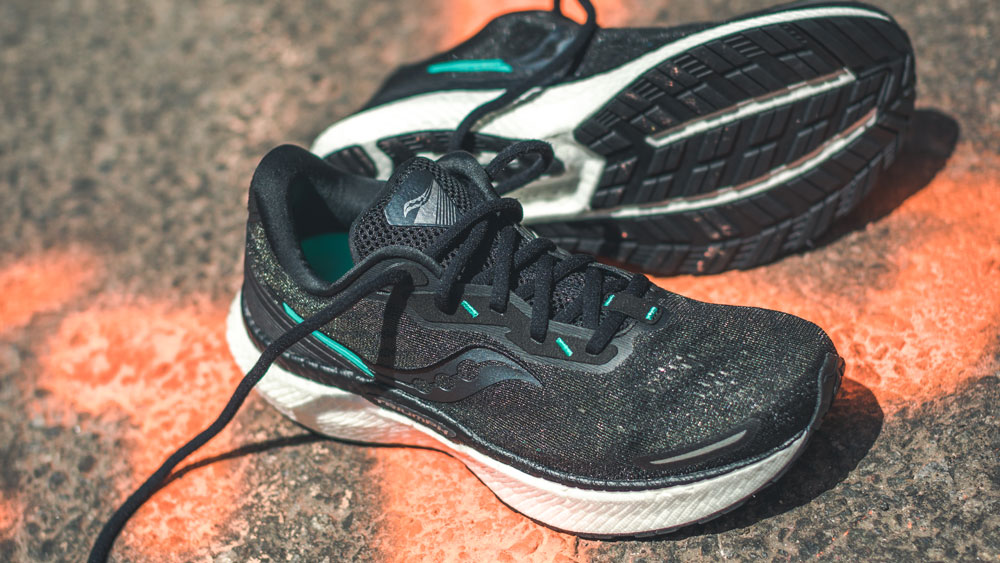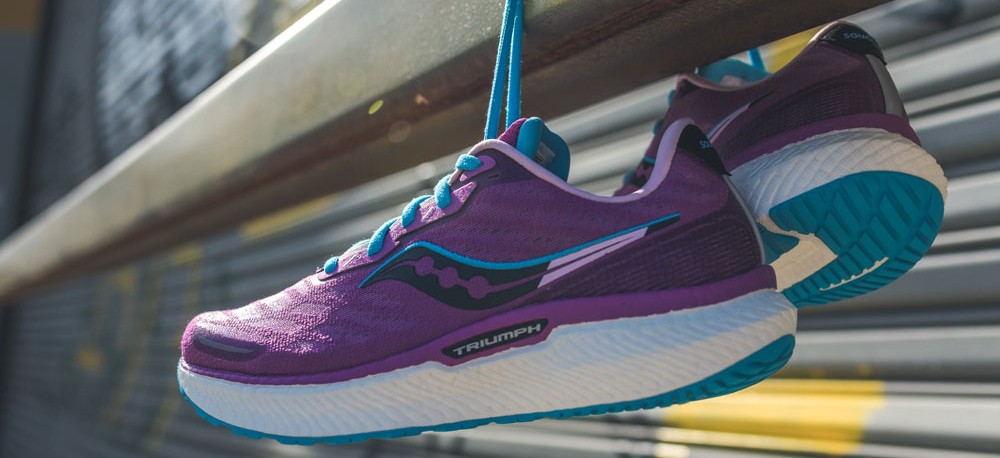For
- Comfortable, cushioned ride
- Lighter than the Triumph 18
Against
- Not ideal for speedy running
- Ride is a little dull
You can trust Coach
The Saucony Triumph has long been a great option for new runners with a budget well above £100. I took my first steps in the sport in an earlier version of the shoe and logged my first few races in it as well.
It was a popular choice because the Triumph line offered a lot of cushioning while also being suitable for more than just easy running. In the past it used Saucony’s lively Everun foam in the midsole, while the latest versions have the brand’s PWRRUN+ foam, which aims to achieve the same blend of comfort and responsiveness.
I found that the Triumph 18 didn’t quite manage to deliver on that reputation, failing to break out of the cruiser category and into our list of the best running shoes. The updates on the Triumph 19 are minimal, but importantly Saucony has managed to reduce the weight of the shoe a little, with my UK size 9 weighing 324g compared with 339g for the Triumph 18.
That seems to have largely been achieved by trimming the amount of material used for the upper, which is now more breathable while retaining the plush and padded feel.
The main strength of the Triumph 19 is still how it feels on easy runs. It is well cushioned and protects your legs whether you’re a new runner getting used to the impact of running or an experienced one pounding through 100km weeks.
It also has a different feel from many of the best cushioned running shoes. A lot of brands opt to put very soft and squishy foams in the midsole; I like a squishy shoe, and the likes of the Nike Invincible and Asics Novablast 2 are comfortable and fun on easy runs, but many runners will prefer the more stable and traditional feel of the Triumph, which is a bit firmer underfoot.
That extra firmness gives the Triumph a little more pop when you’re running at a faster pace, and I found I enjoyed using the shoe for long runs where I progressed my speed to finish near tempo pace. I’m still not convinced it is versatile enough to use as a daily trainer for regular speedwork, but it’s not a clunker that feels very awkward at fast paces.
One problem I did have with the shoe during the 80km of testing is that on a couple of runs over 16km long where I was progressing the pace, I developed uncomfortable hot spots under my forefeet. They came and went in the later stages of the run, and it wasn’t something so painful that I had to stop or slow down, but it was a bit surprising given the amount of cushioning.
The Triumph 19 fit true to size, with a roomy toe box, and a secure fit around the midfoot and heel thanks to the padding on the collar and upper. I used the same size I have in every version of the Triumph I’ve tested without any problems.

The small updates have made the shoe a little more versatile and the padded upper a little less oppressive in hot conditions. However, at £145 it is still a very expensive shoe that really only shines on easy efforts, and there are other options I’d rate as more impressive.
The Brooks Glycerin 19 is more comfortable, while the Puma Velocity Nitro is both more versatile and much cheaper while still a good option on easy efforts. The Asics Novablast 2 has that squishy, bouncy ride which is a little more fun on easy runs and also allows it to perform better than the Triumph for faster running too, while the Nike Infinity 2 has a smoother ride and also does a bit better on quicker efforts.
All these shoes are cheaper than the Triumph 19 while offering a bit more, so although the Triumph is a solid shoe that does the job it sets out to, look elsewhere if you are on the hunt for a cushioned cruiser.

Nick Harris-Fry is a journalist who has been covering health and fitness since 2015. Nick is an avid runner, covering 70-110km a week, which gives him ample opportunity to test a wide range of running shoes and running gear. He is also the chief tester for fitness trackers and running watches, treadmills and exercise bikes, and workout headphones.

